TRYPTAMINE HYDROCHLORIDE
Synonym(s):2-(3-Indolyl)ethylamine hydrochloride;3-(2-Aminoethyl)indole hydrochloride
- CAS NO.:343-94-2
- Empirical Formula: C10H13ClN2
- Molecular Weight: 196.68
- MDL number: MFCD00012682
- EINECS: 206-446-4
- SAFETY DATA SHEET (SDS)
- Update Date: 2024-10-31 13:32:20

What is TRYPTAMINE HYDROCHLORIDE?
Chemical properties
beige to light orange powder
The Uses of TRYPTAMINE HYDROCHLORIDE
Reactant for preparation of:
- Tryptamine derivatives as inhibitors against hepatitis B virus
- Carbamoyl epipodophyllotoxins as potential antitumor agents
- Anthranilic acid derivatives as CCK receptor antagonists
- Brassinin derivatives as indoleamine 2,3-dioxygenase inhibitors
- Antispasmodic agents
- β-carbolinium cations as new antimalarial agents
What are the applications of Application
Tryptamine hydrochloride is a biogenic amine formed from the decarboxylation of tryptophan
General Description
The fluorescence property of tryptamine hydrochloride was studied in reverse micelles solution made with benzylhexadecyldimethylammonium chloride (BHDC) in benzene.
Purification Methods
Crystallise the salt from EtOH/water or EtOH/Et2O. See previous entry for UV. [Beilstein 22 II 347, 22 III/IV 4319, 22/10 V 46.]
Properties of TRYPTAMINE HYDROCHLORIDE
| Melting point: | 253-255 °C(lit.) |
| storage temp. | Hygroscopic, -20°C Freezer, Under inert atmosphere |
| solubility | water: soluble0.1g/10 mL, clear to slightly hazy, colorless to yellow |
| form | Powder |
| color | Beige to light orange |
| Sensitive | Light Sensitive |
| Merck | 14,9796 |
| BRN | 3568419 |
| Stability: | Hygroscopic |
| CAS DataBase Reference | 343-94-2(CAS DataBase Reference) |
| EPA Substance Registry System | 1H-Indole-3-ethanamine, monohydrochloride (343-94-2) |
Safety information for TRYPTAMINE HYDROCHLORIDE
| Signal word | Danger |
| Pictogram(s) |
 Corrosion Corrosives GHS05  Exclamation Mark Irritant GHS07 |
| GHS Hazard Statements |
H302:Acute toxicity,oral H317:Sensitisation, Skin H318:Serious eye damage/eye irritation |
| Precautionary Statement Codes |
P261:Avoid breathing dust/fume/gas/mist/vapours/spray. P264:Wash hands thoroughly after handling. P264:Wash skin thouroughly after handling. P280:Wear protective gloves/protective clothing/eye protection/face protection. P301+P312:IF SWALLOWED: call a POISON CENTER or doctor/physician IF you feel unwell. P302+P352:IF ON SKIN: wash with plenty of soap and water. P305+P351+P338:IF IN EYES: Rinse cautiously with water for several minutes. Remove contact lenses, if present and easy to do. Continuerinsing. |
Computed Descriptors for TRYPTAMINE HYDROCHLORIDE
Abamectin manufacturer
Anand Agencies
Maharashtra
Phone:91-9075014125
Whatsapp: 91-9075014125
product: Tryptamine hydrochloride
New Products
4-Aminotetrahydropyran-4-carbonitrile Hydrochloride (R)-3-Aminobutanenitrile Hydrochloride 4-AMINO-TETRAHYDRO-PYRAN-4-CARBOXYLIC ACID HCL 4-(Dimethylamino)tetrahydro-2H-pyran-4-carbonitrile 3-((Dimethylamino)methyl)-5-methylhexan-2-one oxalate 1,4-Dioxa-8-azaspiro[4.5]decane 5-Bromo-2-nitropyridine Nimesulide BP Aceclofenac IP/BP/EP Diclofenac Sodium IP/BP/EP/USP Mefenamic Acid IP/BP/EP/USP Ornidazole IP Diclofenac Potassium SODIUM AAS SOLUTION ZINC AAS SOLUTION BUFFER SOLUTION PH 10.0(BORATE) GOOCH CRUCIBLE SINTERED AQUANIL 5 BERYLLIUM AAS SOLUTION 2-Bromo-1-(bromomethyl)-3-chloro-5-nitrobenzene 2-Bromo-3-nitroaniline N-(3-Hydroxypropyl)-N-methylacetamide 3-Bromo-6-chloropyridazine 4-ethyl-3-nitrobenzoic acidRelated products of tetrahydrofuran
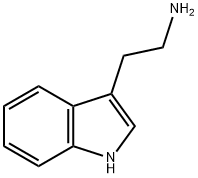


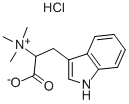

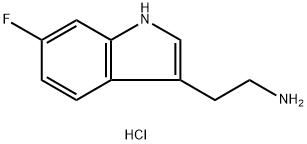
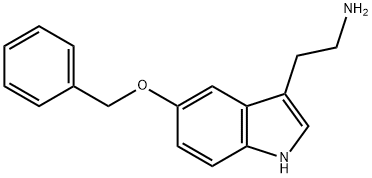
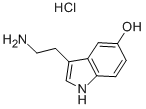
You may like
-
 Tryptamine hydrochloride CAS 343-94-2View Details
Tryptamine hydrochloride CAS 343-94-2View Details
343-94-2 -
 Tryptamine Hydrochloride CAS 343-94-2View Details
Tryptamine Hydrochloride CAS 343-94-2View Details
343-94-2 -
 Tryptamine CAS 343-94-2View Details
Tryptamine CAS 343-94-2View Details
343-94-2 -
 Tryptamine hydrochloride CAS 343-94-2View Details
Tryptamine hydrochloride CAS 343-94-2View Details
343-94-2 -
 Tryptamine hydrochloride CAS 343-94-2View Details
Tryptamine hydrochloride CAS 343-94-2View Details
343-94-2 -
 1823368-42-8 98%View Details
1823368-42-8 98%View Details
1823368-42-8 -
 2-(3-(tert-butyl)phenoxy)-2-methylpropanoic acid 1307449-08-6 98%View Details
2-(3-(tert-butyl)phenoxy)-2-methylpropanoic acid 1307449-08-6 98%View Details
1307449-08-6 -
 Lithium ClavulanateView Details
Lithium ClavulanateView Details
61177-44-4
Statement: All products displayed on this website are only used for non medical purposes such as industrial applications or scientific research, and cannot be used for clinical diagnosis or treatment of humans or animals. They are not medicinal or edible.